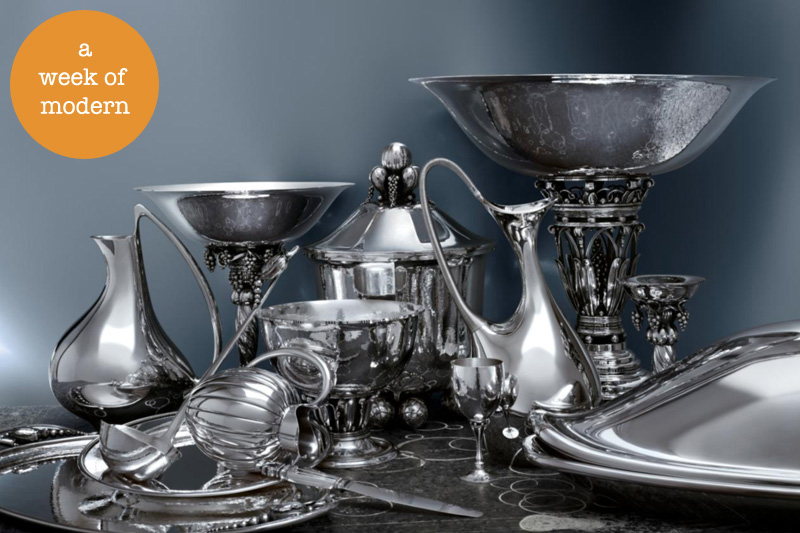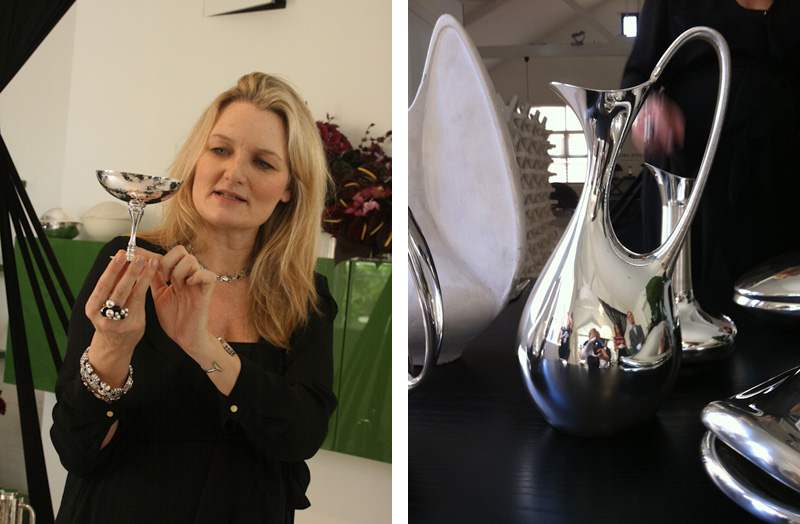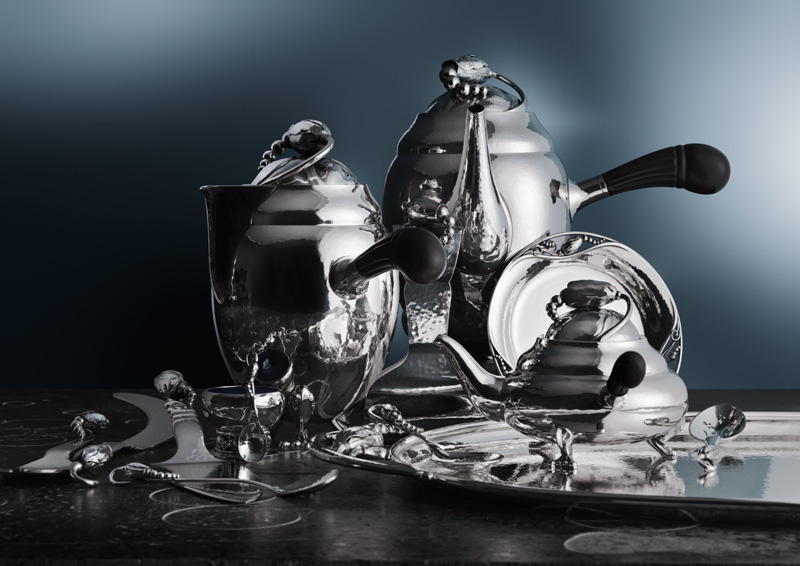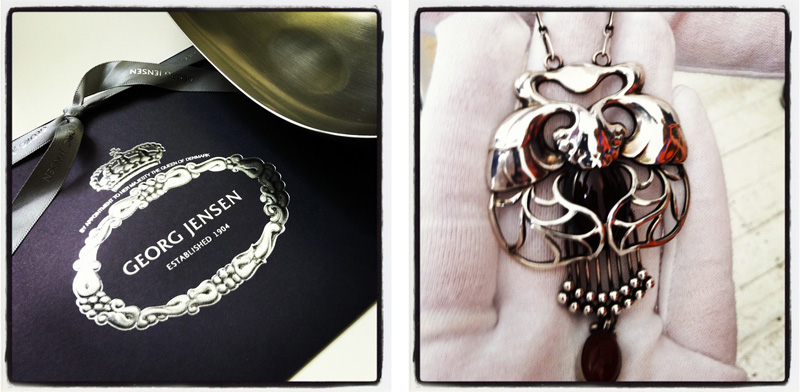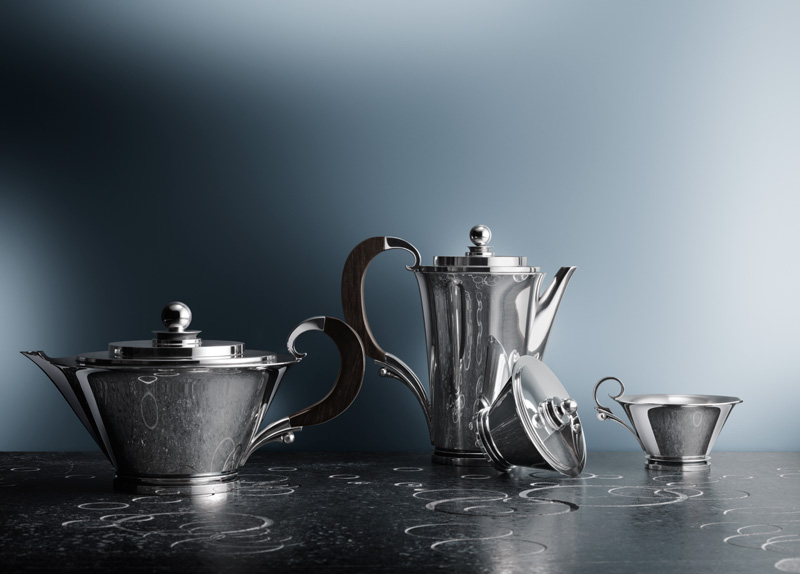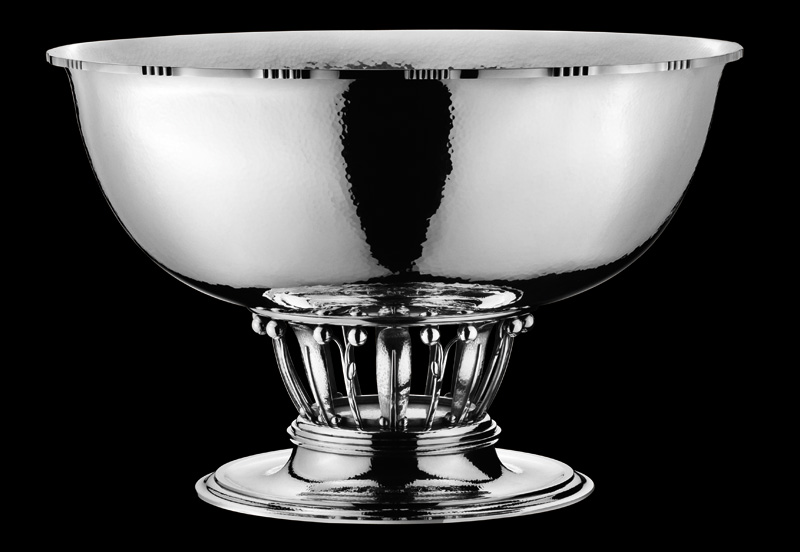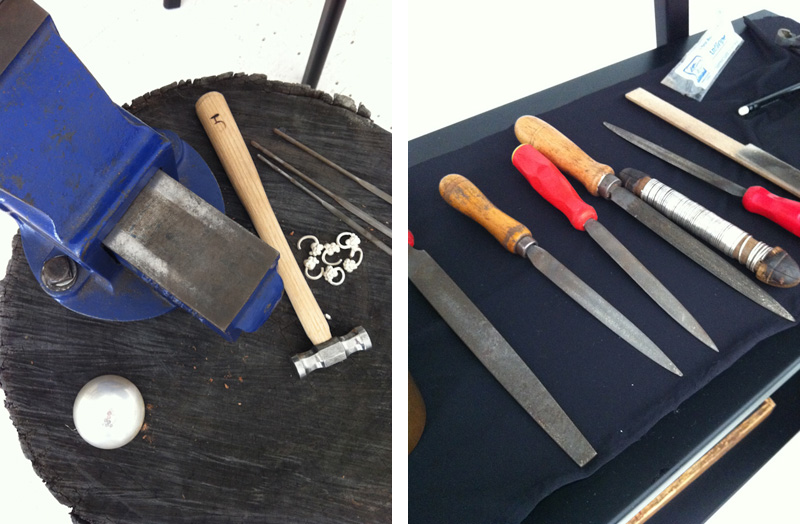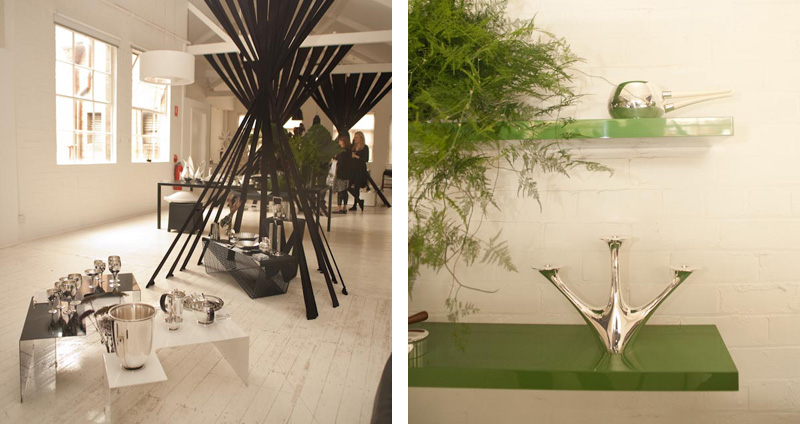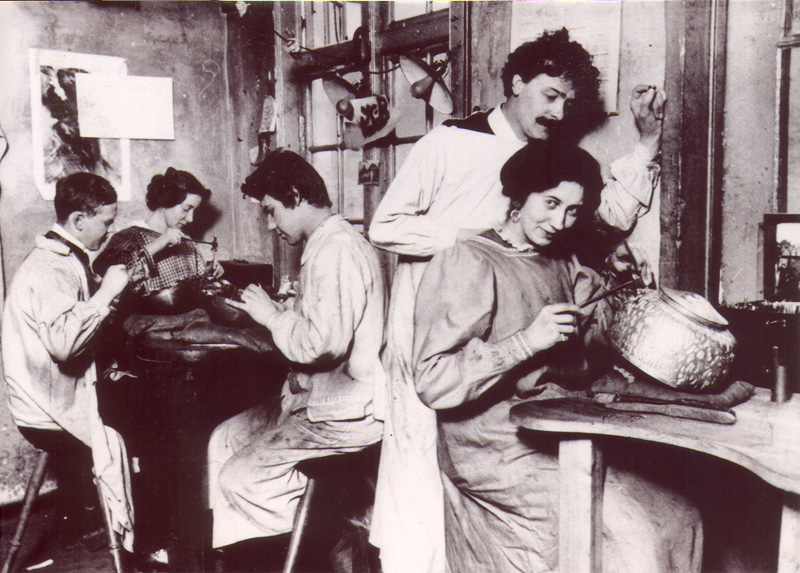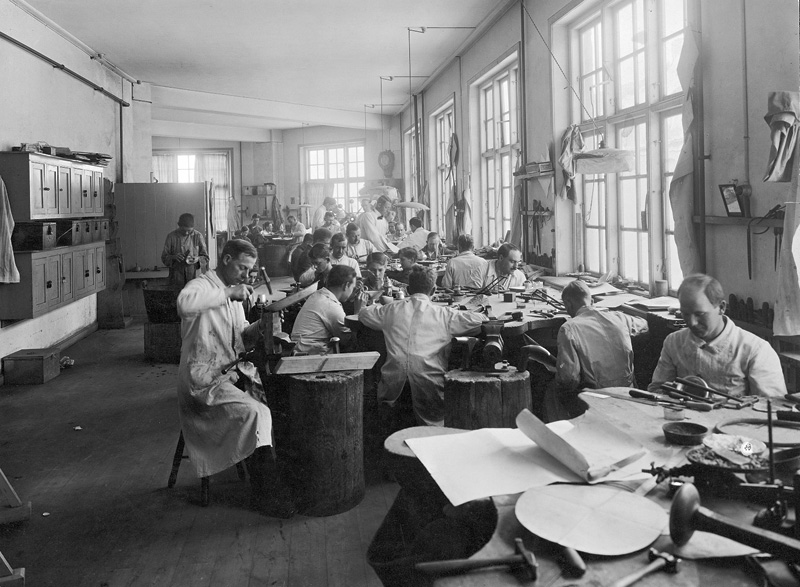Georg Jensen’s sterling silver Ambassador collection
Australia loves Georg Jensen. In fact, we’re so enamoured by the Danish jewellery and homewares company, we’re the biggest market outside of Scandinavia. And evidently, Georg Jensen likes Australia, as they kicked off the tour of their heritage sterling silver “Ambassador Collection” at Sydney’s designer furniture store Corporate Culture, and invited me along for an exclusive presentation with their head of silver, Anne Mette Müller-Krogstrup (below, left).
I was already a Georg Jensen fan, and had visited the basement museum at the flagship store in Copenhagen a few years ago. Even so, I’m more familiar with the modern collections and their distinctive mercurial quality and organic shapes. I’ve collected a few pieces over the years, including my beloved Arne Jacobsen steel cutlery set as well as a few bowls and dishes.
But the Ambassador Collection was really something else. The carefully selected pieces not only provided an instant ‘snapshot’ of the brand’s history, it also beautifully illustrated the emergence of modern design in the 20th century – and how Scandinavian design, in particular, made a significant contribution on a global scale.
But this was no standard exhibition – the magic began when we were invited to don a pair of white cotton gloves. As Anne Mette gave us the potted history of Georg Jensen, she passed around the very first piece he made over 100 years ago: a highly detailed Art Nouveau silver necklace. I held it in my (gloved) hands (below, right) and the design nerd in me silently OMGeeed. The necklace was followed by the exquisite Magnolia collection (circa 1905, above), which features organic forms and highly stylised buds and leaves. I couldn’t help but be transported back to Glasgow and the work of another early proponent of the Art Nouveau movement, Charles Rennie Mackintosh. Japonism was evidently a major influence for both of these designers in the early years of the twentieth century.
I was equally fascinated by the highly decorative Grape collection in 1918, which was clearly influenced by the British Arts & Crafts movement (William Morris et al). Harald Neilsen’s stunning Pyramid Collection (circa 1927, below), also caught my eye. The geometric forms were apparently inspired by the opening of Tutankhamen’s tomb, and make it an outstanding example of Art Deco at its finest.
The time, talent and craftmanship that goes into each piece is evident throughout the collection. The finely hammered Champagne bowl (below) designed by Georg Jensen in 1926 is testament to this, and absolutely mind-blowing.You can actually see and appreciate each strike of the hammer against the steel, which became a hallmark of Jensen’s style.
One of Georg Jensen’s head silversmiths was also on hand to demonstrate some of the techniques he has finely honed over many years. He had an impressive line-up of tools, one of which – a rather dainty hammer with a fine wooden handle – he handed me for inspection. I turned it over in my hand and had a bit of an air-whack, when he mentioned that it had once belonged to Georg Jensen himself. It was one of those once-in-a-lifetime moments that sent my inner geek into another silent round of OMG.
Perhaps the most impressive piece that resonated was Henning Koppel’s Fish Dish 1026, which not only marked a turning point in design, it contributed to the success of mid-century Danish design, which became an international sensation.
Moving from table to table was like moving through the history of 20th century design, and it was enhanced by dramatic draped and twisted black fabric backdrops created by stylist Steve Cordony. To complete the scene, magnificent floral arrangements by Sydney’s premier florist Grandiflora added bursts of vibrant colour and greenery to the gleaming array of sterling silver. It was all thoroughly, and rather splendidly, modern.
FYI, in case you’ve ever wondered, the correct pronunciation is Gayor Yensen. (Definitely NOT Yorge Jensen, which I’ve heard more than a few times.) But apparently they’re quite happy if we just call him George. Just pronounce the ‘J’ in ‘Jenson’ with a Scandi ‘Y’.
Pieces from the Georg Jensen archive are available by special order.
Georg Jensen Sydney flagship store
60 Castlereagh Street
Sydney NSW 2000
Tel. +61 2 9221 7419
Opening hours:
Monday to Friday 9.30am-6pm
Saturday 10am-5pm
Sunday 11am-4pm
p.s. thought you might like to see these photos of the George Jensen smithy, circa 1920, below, and 1918, bottom:
It’s ‘ A Week of Modern‘ on Wee Birdy – have a look at the other posts so far this week.






